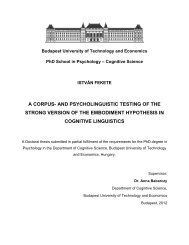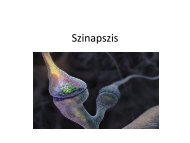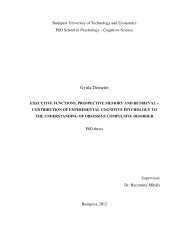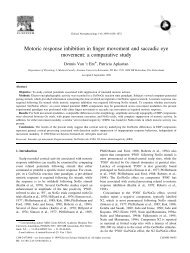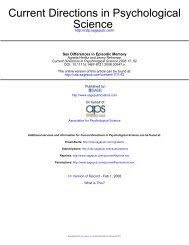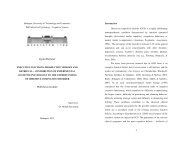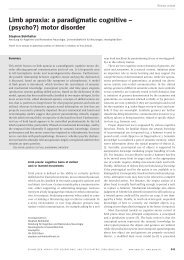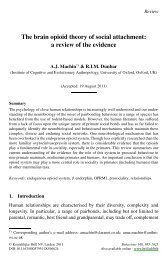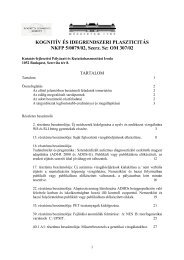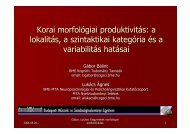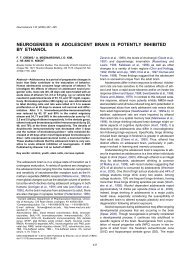Verbs: some properties and their consequences for agrammatic ...
Verbs: some properties and their consequences for agrammatic ...
Verbs: some properties and their consequences for agrammatic ...
Create successful ePaper yourself
Turn your PDF publications into a flip-book with our unique Google optimized e-Paper software.
254<br />
a ®nite verb is needed to produce a grammatical sentence. A solution is to insert do <strong>for</strong><br />
expressing tense <strong>and</strong> agreement, which is base-generated to the left of not, resulting in<br />
�13). In spoken language, the negation marker cliticizes with the auxiliary: doesn't, don't,<br />
can't, ain't.<br />
7.1.5. Negation in Spanish<br />
In Spanish, negating an af®rmative sentence �see example 14), by inserting the negation<br />
morpheme no, affects movement of the verb. Rather than just moving over no, the negation<br />
morpheme cliticizes to the left of the verb <strong>and</strong> joins it on its way to the proper position in<br />
the sentence �as can be seen in sentences 15 <strong>and</strong> 16):<br />
�14) Pedro come la manzana<br />
Peter eats the apple<br />
�15) *Pedro come no la manzana<br />
�16)<br />
R. Bastiaanse et al. / Journal of Neurolinguistics 15 �2002) 239±264<br />
�lit. Peter eats not the apple; Peter does not eat the apple)<br />
�lit. Peter not eats the apple; Peter does not eat the apple).<br />
In sum, the four languages differ with respect to the relation between verb movement<br />
<strong>and</strong> negation: in Dutch <strong>and</strong> Norwegian, insertion of the negation morpheme does not affect<br />
verb movement, whereas in English <strong>and</strong> in Spanish, verb movement interferes with<br />
negation.<br />
We hypothesize that this dependency between verb movement <strong>and</strong> negation plays a role<br />
in the construction of negative sentences in <strong>agrammatic</strong> aphasia. It is expected that it is<br />
harder to <strong>for</strong>m negative sentences <strong>for</strong> <strong>agrammatic</strong> patients if verb movement is related to<br />
negation, since verb movement is affected in <strong>agrammatic</strong> production �see ®rst study<br />
above). Bastiaanse et al. �2000) report on a study testing this assumption <strong>for</strong> Dutch <strong>and</strong><br />
English. They found that English <strong>agrammatic</strong> patients were signi®cantly more impaired in<br />
producing negative sentences than Dutch patients, but that <strong>their</strong> ability to <strong>for</strong>m af®rmative<br />
sentences was comparable, con®rming our expectations.<br />
This hypothesis is elaborated upon in the present study by including data from<br />
two more languages: Norwegian <strong>and</strong> Spanish. Based on the <strong>properties</strong> of negative<br />
sentences in these two languages, we expect that the Spanish <strong>agrammatic</strong> patients<br />
per<strong>for</strong>m similarly to the English <strong>and</strong> that the per<strong>for</strong>mances of the Norwegian <strong>agrammatic</strong><br />
patients follow the pattern of the Dutch patients. The English <strong>and</strong> Spanish<br />
patients will encounter more problems with constructing negative sentences than<br />
af®rmative sentences, while this difference is not expected to show up in the<br />
Dutch <strong>and</strong> Norwegian <strong>agrammatic</strong> aphasics.



